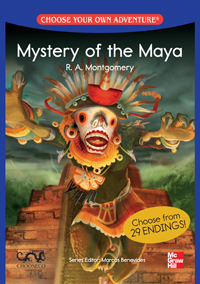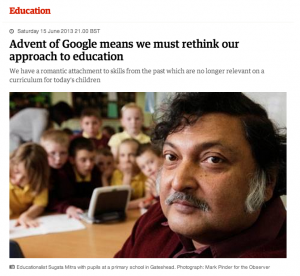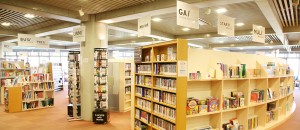curriculum EFL extensive reading graded readers language courses Language learning materials readers Reading teaching university
by sendaiben
6 comments
Choose Your Own Adventure readers -in class!
Today I am going to introduce a new activity I have been doing with extensive reading classes here at Tohoku University this semester. Our ER classes consist of approximately 45 minutes of silent reading and 45 minutes of supplementary activities including speaking, listening, and writing.
One activity that students enjoyed was reading some of the Choose Your Own Adventure readers in groups (I got the idea from Marcos Benevides).
Background Info
The Choose Your Own Adventure books (CYOA from now on) were popular when I was in school. They consist of books where the reader is given choices and the story develops differently based on those choices, up until an ending is reached. Some endings are good and some are bad. It’s kind of like a computer or role-playing game.
The CYOA readers are published by McGraw-Hill Education, and consist of 30 titles over three levels (500, 700, and 900 headwords). I used this in-class reading activity twice, once with Mystery of the Maya, and once with Cup of Death. Both are at the 500 headword level.
Procedure
The activity takes 30-35 minutes. First, introduce the concept of gamebooks to the students and walk them through the ‘read a page, decide on a course of action, go to the next page’ dynamic.
Assign the students to random groups (we found pairs and groups of three work best, as larger groups mean each student has too little to do). Explain that each group member will in turn read a page, the group will make the decision, and the book will be passed to the next member. This will continue until an ending is reached. If groups finish early they should go back and try to get another ending.
The teacher then reads the first page to the class before distributing one book to each group. Once a group has their book, they can start.
Results
We did this activity twice with about a dozen classes. Students actively read, listened, and discussed options for the whole time the activity went on. Many students enjoyed the activity and were clearly happy when teachers introduced the second book (three weeks after the first one). The highly structured nature of the activity makes it easy for students to participate.
Evaluation
This is a great activity to do two or three times a semester. It would be possible to base an entire course around reading CYOA books, but I suspect the novelty might wear off. Of course, as with any activity, not all students enjoyed it to the same extent. In terms of materials, one class set can be shared among several teachers.
The best thing about this activity is that it really brings out the meaning in the books: students have to understand the text in order to choose their next action.
Improvements
1. The content of each book in the CYOA series varies considerably. Our students had some trouble with the Mayan setting, so it might have been useful to pre-teach some of the background, the geography, and the history. This could be done in a few minutes. Going through the proper nouns in the book would also help students read more smoothly.
2. Doing the exercise in pairs gives more reading/speaking time to each student.
3. It is not necessary to have class sets of each book: the same activity could be done with each group/pair reading a different book (of course, pre-teaching and having the teacher read the first page would not be possible in this case). This would allow students to choose which book they wanted to read, possibly making it more interesting for them.
Conclusion
This was a very positive experience for my colleague and I, and for the students. It is likely to become a regular activity in our ER classes.
curriculum expectations extensive reading language courses Language learning school management self-study TED
by sendaiben
2 comments
New Educational Paradigms
Sugata Mitra’s article in the Guardian on Saturday was very interesting. If you have seen his TED talks (and they are well worth watching), you will know the kind of educational changes he is looking to make.
What struck me is how similar it is to what my collaborator Daniel E. and I are trying to do at Tohoku University. There is a common thread running through our reading, discussion, presentation, and computer classes. We call it ‘practical’, ‘industrial’, or ‘student-focused’ English. To be honest, we haven’t found the perfect descriptor yet 😉
All of the classes are built on the following principles:
1. content and participation are student-generated
2. the bulk of the teacher’s work happens outside the classroom in planning and preparation
3. teachers have a coaching rather than instructional role
4. students are active and spend most of their time using English in pairs or small groups
5. teachers have high expectations regarding student achievement
We’ve mainly been talking about extensive reading so far, but there are plans afoot for a guide to leading discussion classes, with online study and presentation to follow after that. For now, you can catch us at the Extensive Reading World Congress in Seoul in September, or at JALT National in Kobe in October.
Or, you know, leave a comment here if you like!
conference curriculum expectations extensive reading graded readers language courses presentations school management university
by sendaiben
5 comments
Student Reactions to Extensive Reading (Pan-SIG 2013)
I was at the Pan-SIG conference this weekend, held in Nagoya (the excellent Nanzan University hosted the event). This is the video of my presentation (a little shorter than usual):
Thanks to everyone who attended.
EFL eikaiwa ES extensive listening extensive reading kids language courses Language learning materials online resources oxford owl Oxford Reading Tree Reading self-study websites young learners
by sendaiben
leave a comment
Oxford Owl website
This is another post I have been meaning to write for a while. Oxford Owl is a free website created by Oxford University Press. It has a range of useful resources -I’ll briefly list a few here.
The website has reading and maths sections. I haven’t done much with the maths so far.
The reading section has a range of free ebooks from the Oxford Reading Tree series. Most of the books can be read online, and feature the art, text, and audio. This is a wonderful resource for self-study at home or in the classroom.
There are also a couple of online games and a range of printable resources for students.
Finally, there is a lot of advice for teachers and parents on how to teach reading and support students with reading practice. Although much of this is aimed at native speakers, a lot of it transfers quite well to EFL.
Is anybody using Oxford Owl? Any good features I have missed? Please leave a comment below:
business curriculum eikaiwa extensive listening extensive reading language courses materials school management self-study teaching technology university
by sendaiben
10 comments
Self-access centres in private language schools
I have always wanted to have some kind of self-access centre (room?) at Cambridge English. I feel it would offer a lot of value to some students, as well as make what we do more effective.
The room would have books, computers, and comfortable chairs. It would have nice lighting and be a quiet, pleasant place.
Students would come and use the room whenever they wanted, and regular classes would also include self-study time (students would have to spend 30-60 minutes of a 90- or 120-minute class doing self-study).
We may have the chance to create something like this this year as our current classroom is too small and there is very little real estate available in Sendai after the 2011 disaster so we have rented an apartment above the school to have classes in.
I would like to do something like this at university as well. For now, I think the best chance is to work with the library.
Does anyone have any experience of implementing this kind of system?
(photo is the Self-Access Centre at Kanda University)



